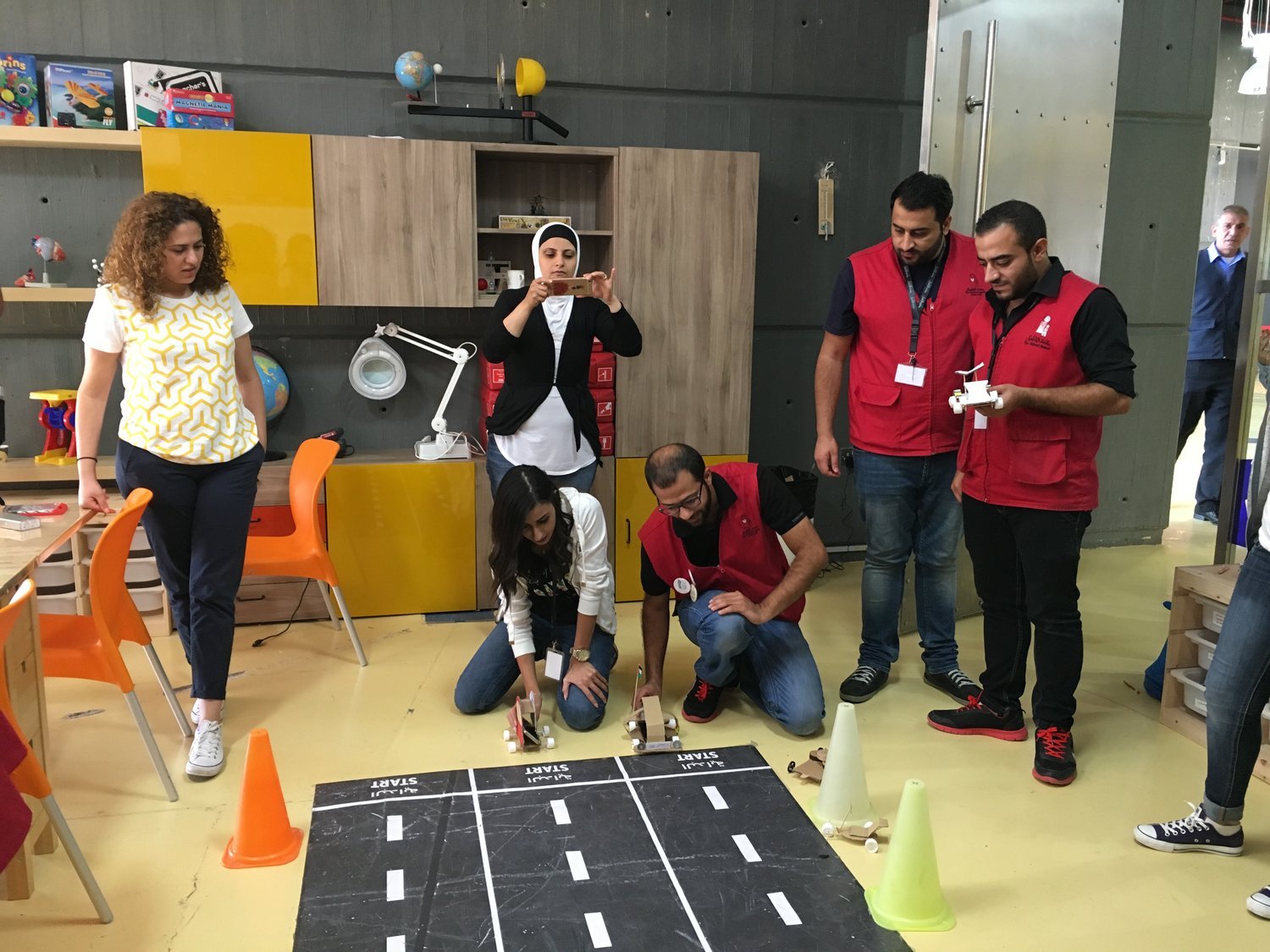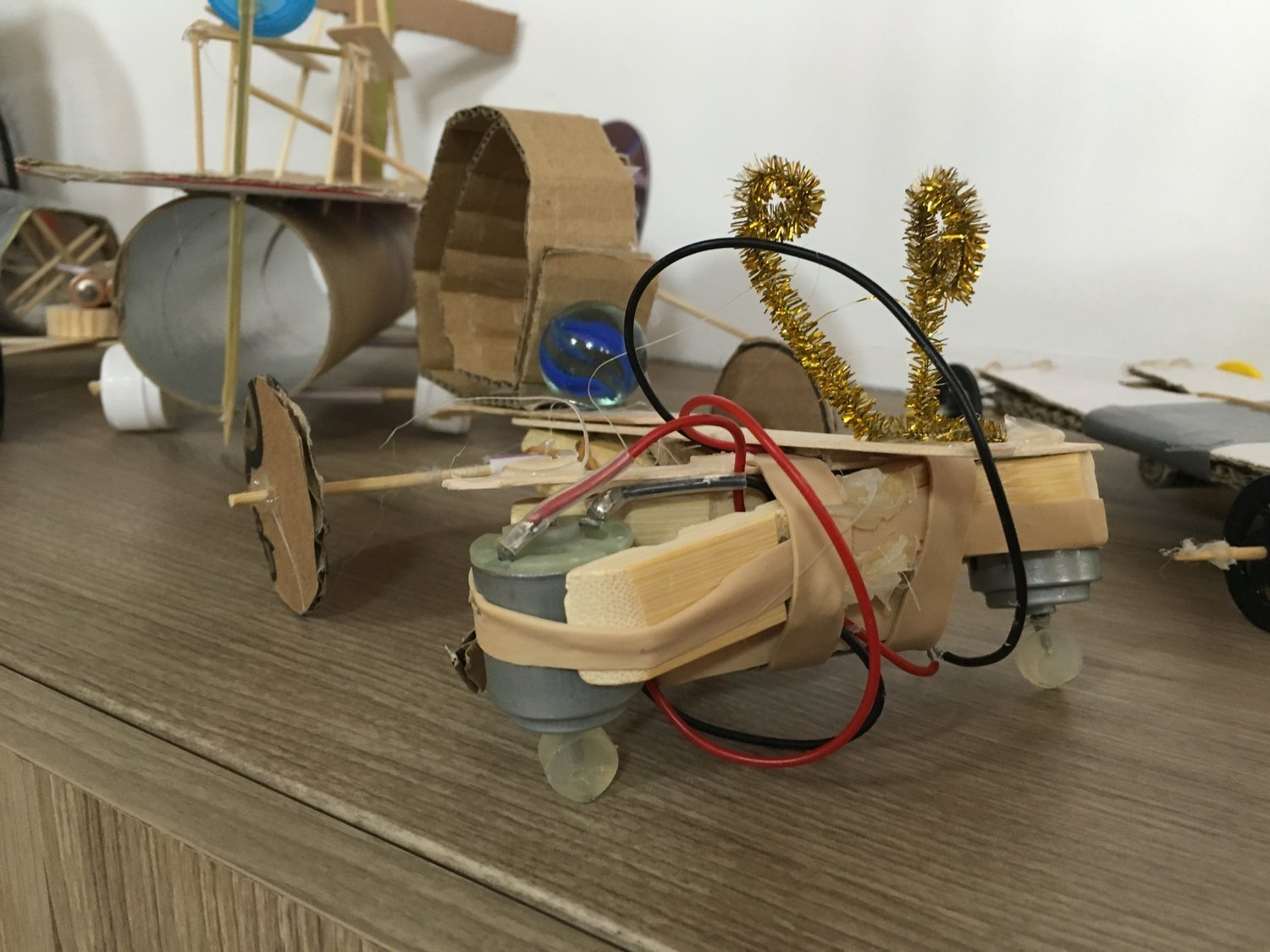Tinkering with Cars
At the Children's Museum Jordan, I had a unique opportunity to spend a few days after my tinkering workshop embedded with the team at the Tinker Lab, getting a feel for the daily routine and offering advice on environment and activity design.
However, I have to admit that I felt a little disappointment when I found out that the workshop in the space would be making and testing cars. There's several reasons why this activity has been one of my least favorite traditional maker workshop.
Cars give a certain initial impression of what they are supposed to look like, narrowing the path of the builder in a way that art machines or light and shadow sculptures don't. Cars seems to invite competition instead of collaboration as they usually end with a race with a implicit or explicit winner in the fastest car or the one that travels the farthest. And finally, cars feels like a very engineering-centric activity with less opportunities for personalization, artistic expression or story telling and narrative.
But I thought that it would be important to go with the existing activity in the space and I hoped that I would be able to learn something new and gain a different appreciation for the possibilities.
So we tried the activity together and shared what had been working and what could be improved. Some of the challenges we identified were the final "race" not being satisfying, many of the cars looking the same at the end, and more of an emphasis on the finished product than the process of building
After the first day of working together we already identified some ideas for deepening the experience. We mocked up a rough prototype of a curved cardboard track that felt more like a testing station than a race track.
We also built a display area for different example vehicles made by us and visitors. This did a couple things, one it emphasized the variety of different possibilities in the activity including non traditional designs and others that were characters like a cute mouse car. But it also gave people a place to leave their cars in the space instead of being focused on taking them home.
The next day we tried to expand the palette of materials for car explorations. We tried out rubber bands, balloons, hobby motors, and solar panels as ways to make the cars move. These experiments might not all result in adding the materials to the workshop set, but I think it's important to continue prototyping and investigating diverse pathways around an activity or phenomenon.
This day we also tested the activity a couple times with museum visitors. And as we set up the room we experimented with table layout and materials placement as environmental considerations that could affect the experience.
And the last day, we tried another important step in the process. The tinkering facilitators led the new version of the car activity for their colleagues in the education staff. This gave them the chance to test out the workshop, give us new ideas, and offer constructive feedback on the facilitation, activity design, and environment.
While cars may still not be my favorite activity, after spending a few days prototyping and sharing ideas with the team from CMJ I will say that my ideas have changed. There are lots of activities and workshops in schools and museums that can benefit from subtle shifts to become more tinkerable through practice and experimentation.




